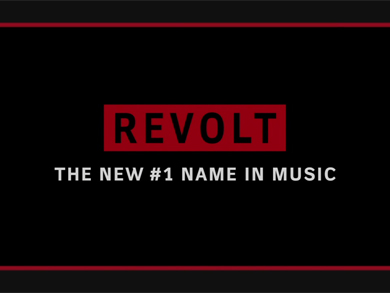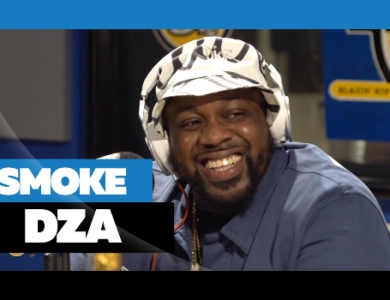
Fueled by holiday and year-end discounts, as well as the introduction of new models, Detroit’s automakers finished 2010 on a high note by posting solid December sales gains.
@funkmasterflex
General Motors Co., helped by new models and healthy demand for crossovers, recorded an 8 percent increase. Ford Motor Co. said demand rose 4 percent while Chrysler Group had a 16 percent jump.
Results from the first automakers to report show U.S. automobile sales may have continued at the fastest pace since 2009 in December, enough to carry the industry to its first annual increase since 2005. The industry’s sales total in 2009 was the lowest in 27 years.
Total sales probably ran at an annual rate of 12.3 million vehicles last month, based on the average of eight analysts’ estimates compiled by Bloomberg. In November and October, sales hit the same pace.
It was Chrysler’s ninth consecutive monthly sales gain. Jeep Grand Cherokee demand more than tripled, and Ram pickup sales jumped 93 percent compared with December 2009, which was among the year’s strongest months for the industry.
Ford had posted double-digit sales increases each month last year except for a 3 percent rise in July and a 14 percent decline in August.
While sales at the Ford division climbed 10 percent last month, Ford’s results were hampered by a 23 percent drop in Lincoln sales, and an 11 percent fall in Mercury demand amid that brand’s phase-out.
Ford said its December results also reflect a 40 percent reduction in deliveries to daily rental customers.
For the year, Ford’s U.S. sales rose 17 percent to 1.935 million units – helping the automaker gain market share for the second consecutive year. It’s the first back-to-back increase in Ford’s U.S. market share since 1993. Ford estimated its U.S. market share in 2010 at 16.4 percent, up 1.1 points from 2009 and 2.2 points from 2008.
Chrysler up
Chrysler said its sales rose 17 percent last year to 1.1 million units. All of the company’s brands – Chrysler, Jeep, Dodge and Ram Truck – generated sales increases in 2010 compared with 2009.
The automaker launched 16 all-new or significantly-improved models in 2010, most of them during the final quarter.
“We are extremely proud of the sales strides we made during this transition year,†Fred Diaz, head of the Ram truck brand and Chrysler’s top sales executive, said in a statement.
At GM, December marked the fourth consecutive monthly sales gain after its August sales dropped 25 percent, reflecting an unfavorable comparison to August 2009 — when the government’s cash-for- clunkers program fueled demand.
The automaker’s U.S. sales advanced 7 percent for all of 2010 – its first annual increase since 1999.
Demand was up last month for all four of GM’s surviving U.S. brands, with sales advancing 40 percent at Buick, 13 percent at Cadillac, 9 percent at Chevrolet and 35 percent at GMC.
For all of 2011, sales for GM’s four brands increased 21 percent to 2.2 million units, while retail sales rose 16 percent during the year.
GM’s four brands sold 118,435 more vehicles this year than the company generated with eight brands in 2009. The four brands are expected to gain total and retail market share for the year, GM said.
But the automaker’s overall sales performance continues to be dragged down by the discontinuation of Pontiac, Saturn, and Hummer. GM’s results also no longer include Saab.
GM said today its December sales also reflected a planned reduction in fleet sales to rental operators. Fleet sales represented 17 percent of GM’s overall sales last month.
GM said it sold 567,458 crossovers in the U.S. last year – more than any other automaker.
Full-year industry deliveries probably rebounded to about 11.5 million vehicles from 10.4 million in 2009. The rebound in sales bolstered GM on its way to the second-largest U.S. initial public offering and helped Ford earn the most through three quarters since 1998. Toyota Motor Corp., hurt by more than 8 million recalls for unintended acceleration, fell behind Ford in U.S. sales for the first time since 2006.
At Jaguar Land Rover, December sales inched up 1 percent, but advanced 18 percent for all of 2010.
“Consumers are now becoming more comfortable buying cars in an uncertain economic environment, which is a major change in buying patterns compared to a year ago,†said Jesse Toprak, vice president of industry trends at TrueCar.com. “We saw more of the same in terms of consumers’ eagerness to come back into the marketplace in December.â€
Toyota, the world’s largest automaker, is forecast to report a 10 percent decline for December, based on the average estimate of three analysts. A drop in December sales would be the third-straight month the company’s U.S. deliveries declined. It may be the only large automaker to sell fewer vehicles in the U.S. last year than in 2009.
‘Falling behind’
“The biggest worry for Toyota is they’re not taking advantage of the recovery in the market,†said Toprak, the analyst with TrueCar. He predicts an 11 percent decrease in Toyota deliveries. “They’re falling behind again in a month where all their competitors are up from last year. It just can’t be good for momentum, sales or morale.â€
Deliveries at Honda Motor Co. may have risen 7.2 percent, and Nissan Motor Co.’s sales may have increased 20 percent, according to the average of three analysts’ estimates.
Sales of 11.5 million vehicles this year would be almost a third fewer than the 16.8 million annual average from 2000 to 2007, according to Autodata Corp.
S&P expects industrywide deliveries will increase to 13 million in 2011, driven by light trucks, SUVs and luxury vehicles, Levy wrote.
“We have a high degree of confidence that 2011 is going to be a stronger sales year,†George Pipas, Ford’s sales analyst, said last month during a briefing with reporters. “We’re a whole lot better off than we were a year ago.â€
December had 27 selling days, one fewer than a year earlier.
AN












